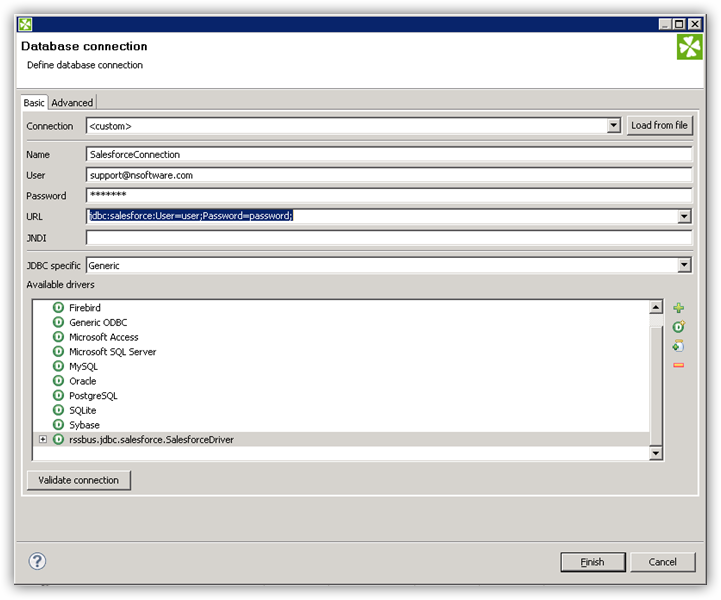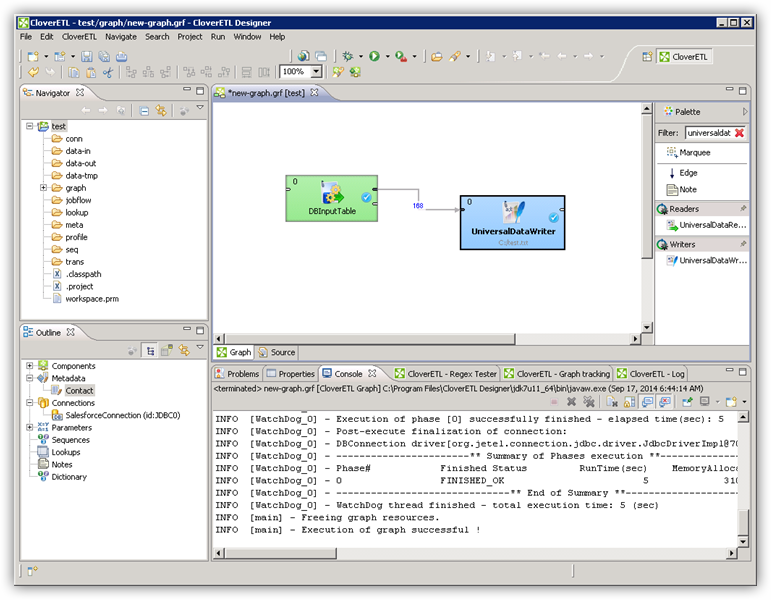Discover how a bimodal integration strategy can address the major data management challenges facing your organization today.
Get the Report →Connect to Reckon Accounts Hosted Data in CloverDX (formerly CloverETL)
Transfer Reckon Accounts Hosted data using the visual workflow in the CloverDX data integration tool.
The CData JDBC Driver for Reckon Accounts Hosted enables you to use the data transformation components in CloverDX (formerly CloverETL) to work with Reckon Accounts Hosted as sources and destinations. In this article, you will use the JDBC Driver for Reckon Accounts Hosted to set up a simple transfer into a flat file. The CData JDBC Driver for Reckon Accounts Hosted enables you to use the data transformation components in CloverDX (formerly CloverETL) to work with Reckon Accounts Hosted as sources and destinations. In this article, you will use the JDBC Driver for Reckon Accounts Hosted to set up a simple transfer into a flat file.
Connect to Reckon Accounts Hosted as a JDBC Data Source
- Create the connection to Reckon Accounts Hosted data. In a new CloverDX graph, right-click the Connections node in the Outline pane and click Connections -> Create Connection. The Database Connection wizard is displayed.
- Click the plus icon to load a driver from a JAR. Browse to the lib subfolder of the installation directory and select the cdata.jdbc.reckonaccountshosted.jar file.
- Enter the JDBC URL.
The connector makes requests to Reckon Accounts Hosted through OAuth. Specify the following connection properties:
- SubscriptionKey: Required. You get this value when you created your developer account.
- CountryVersion: Defaults to 2021.R2.AU.
- CompanyFile: Required. The path to the company file.
- User: Required. The username of the company file.
- Password: Required. The password of the company file.
- InitiateOAuth: Set this to GETANDREFRESH to let the driver handle access tokens.
- CallbackURL: The redirectURI of your Custom OAuth App.
- OAuthClientId: The client id of your Custom OAuth App.
- OAuthClientSecret: The client secret of your Custom OAuth App.
CData provides an embedded OAuth application that simplifies OAuth desktop authentication. See the Help documentation for information on other OAuth authentication methods (web, headless, etc.), creating custom OAuth applications, and reasons for doing so.
Built-in Connection String Designer
For assistance in constructing the JDBC URL, use the connection string designer built into the Reckon Accounts Hosted JDBC Driver. Either double-click the JAR file or execute the jar file from the command-line.
java -jar cdata.jdbc.reckonaccountshosted.jarFill in the connection properties and copy the connection string to the clipboard.
![Using the built-in connection string designer to generate a JDBC URL (Salesforce is shown.)]()
A typical JDBC URL is below:
jdbc:reckonaccountshosted:SubscriptionKey=my_subscription_key;CountryVersion=2021.R2.AU;CompanyFile=Q:/CompanyName.QBW;User=my_user;Password=my_password;CallbackURL=http://localhost:33333;OAuthClientId=my_oauth_client_id;OAuthClientSecret=my_oauth_client_secret;InitiateOAuth=GETANDREFRESH

Query Reckon Accounts Hosted Data with the DBInputTable Component
- Drag a DBInputTable from the Readers selection of the Palette onto the job flow and double-click it to open the configuration editor.
- In the DB connection property, select the Reckon Accounts Hosted JDBC data source from the drop-down menu.
- Enter the SQL query. For example:
SELECT Name, Balance FROM Accounts WHERE IsActive = 'true'
Write the Output of the Query to a UniversalDataWriter
- Drag a UniversalDataWriter from the Writers selection onto the jobflow.
- Double-click the UniversalDataWriter to open the configuration editor and add a file URL.
- Right-click the DBInputTable and then click Extract Metadata.
- Connect the output port of the DBInputTable to the UniversalDataWriter.
- In the resulting Select Metadata menu for the UniversalDataWriter, choose the Accounts table. (You can also open this menu by right-clicking the input port for the UniversalDataWriter.)
- Click Run to write to the file.








